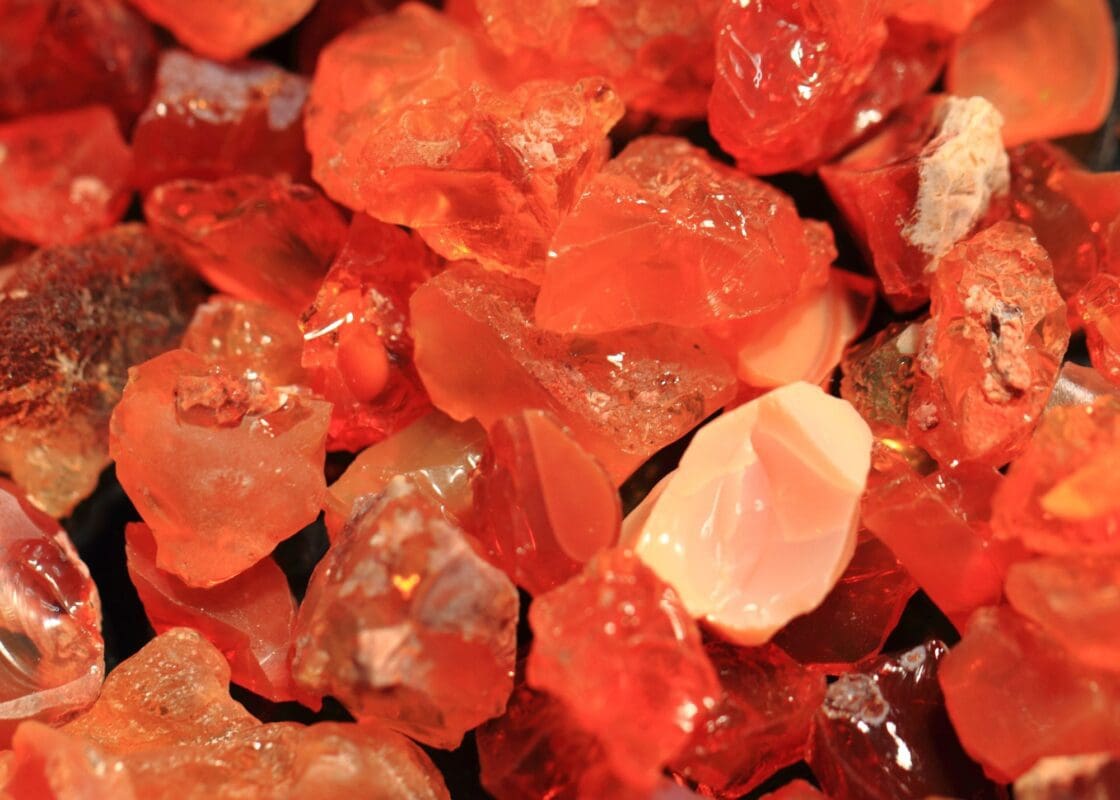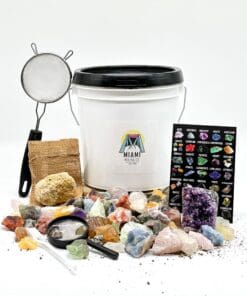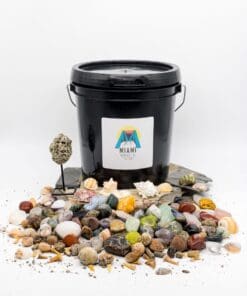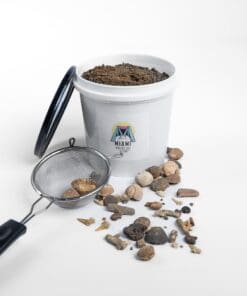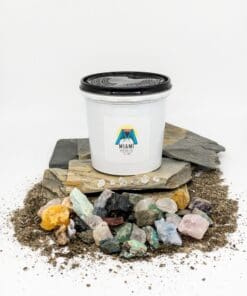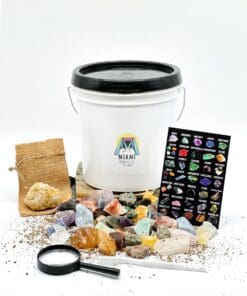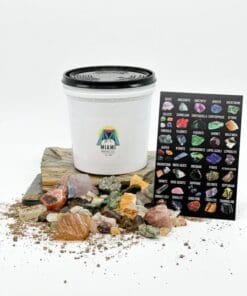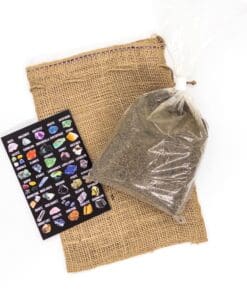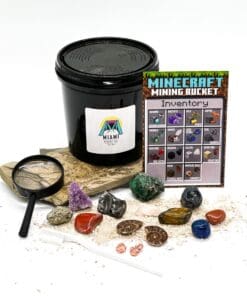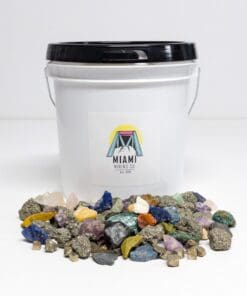Wyoming Gem Mining: A Treasure Hunter’s Ultimate Guide
Wyoming, often associated with vast plains and mountainous landscapes, holds within its soil an alluring treasure – gemstones. Gem mining in Wyoming is not just a pursuit but a passion for many, offering the thrill of discovery and the satisfaction of unearthing nature’s hidden jewels. In this article, we will embark on a journey to explore Wyoming’s gem-rich history, its prime mining spots, and practical tips to make your gem hunting adventure a success.
The Most Popular Gemstones in Wyoming
Wyoming, with its varied geological terrain, offers both rare and commonly found gemstones. These stones, each with its unique appearance and properties, tell tales of the state’s rich subterranean history.
Rare Gemstones Found in Wyoming

| Gemstone | Description |
|---|---|
| Wyoming Jade (Nephrite) | Often deep green, this jade is recognized for its impeccable quality and durability. |
| Red Beryl | More rare than diamonds, it boasts a stunning ruby-red hue and is also known as “red emerald”. |
| Fire Opal | A radiant gemstone, it displays vibrant red, orange, and yellow colors reminiscent of a sunset. |
| Blue Garnet | A rare variant of garnets, it can sometimes change color based on lighting, appearing bluer under certain lights. |
| Diamond | Though not as commonly found as in other parts of the world, Wyoming’s diamonds are a prized find, known for their clarity and brilliance. |
Common Gemstones Found in Wyoming
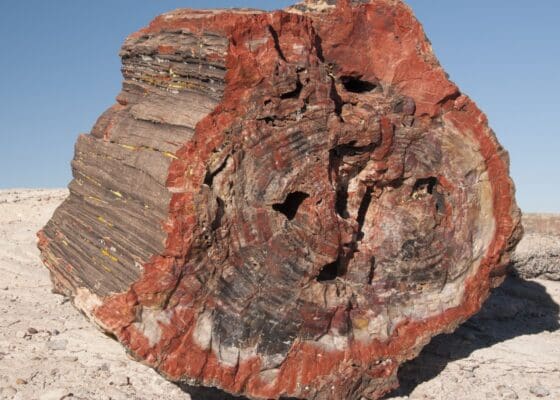
| Gemstone | Description |
|---|---|
| Agate | Exhibiting a variety of colors and patterns, agates from Wyoming are often used in jewelry and as decorative items. |
| Quartz | Found in various forms, from clear to milky or even purple (amethyst), quartz is versatile in its uses. |
| Jasper | Often red, brown, or green, jasper is a favorite among lapidaries for its patterns and opacity. |
| Petrified Wood | Ancient wood turned to stone over millions of years, it showcases the state’s long geological history. |
| Sunstone | Displaying a shimmery, sun-like sparkle, sunstones are often found in various shades of orange and red. |
| Tourmaline | This gem can be found in a spectrum of colors and is known for its prismatic crystal shape. |
| Labradorite | Recognized for its iridescent play-of-color, labradorite often showcases blue, green, or gold flashes. |
| Moonstone | Typically translucent with a white or blueish shimmer, moonstones are reminiscent of moonlight. |
| Peridot | This bright green gemstone is sometimes referred to as “evening emerald” due to its light green hue. |
| Chalcedony | A type of quartz, chalcedony comes in various colors and has a waxy luster, often used in carvings and cabochons. |
Both rare and common gemstones in Wyoming contribute to its reputation as a treasure trove for hobbyists and professional gem miners alike. Whether you’re in search of the elusive blue garnet or the captivating fire opal, or simply wish to gather beautiful agates, Wyoming’s vast landscapes promise a rewarding adventure.
Top Gem Mining Locations in Wyoming

- Green Mountain, Central Wyoming – A hotbed for quality jade, Green Mountain is a must-visit for enthusiasts. While the terrain can be rugged, the potential rewards are vast. It’s a public land area, but ensure to check seasonal accessibility before visiting. Operating hours are generally dawn to dusk.
- Laramie Mountains, Southeastern Wyoming – The Laramie Mountains are not only scenic but are also home to a plethora of agates and jade. Most areas are open from sunrise to sunset. Ensure to adhere to the “leave no trace” policy to maintain the site’s natural beauty.
- Graveyard Point, Southwestern Wyoming – Renowned for its stunning agate specimens, Graveyard Point is a favorite spot for both beginners and seasoned gem hunters. The site is open year-round, but spring and fall are the most recommended times to visit.
- Wind River Range, Western Wyoming – Home to Wyoming’s state gemstone, jade, the Wind River Range also offers a chance to find garnets and diamonds. Given its mountainous terrain, it’s advisable to visit during summer and early fall.
- Bighorn Mountains, North-central Wyoming – While jade is a popular find here, petrified wood is also abundant. Accessibility can be limited during winter months due to snow.
- Sweetwater River Area, Central Wyoming – This is one of the few places in Wyoming where you can find the rare red beryl. The area is vast, so it’s a good idea to visit with someone familiar with the locality.
- Killpecker Sand Dunes, Southwestern Wyoming – Apart from being a renowned area for its unique geological formations, it is also a site where sunstones can be found. The dunes are accessible year-round, though spring is the most popular time for gem hunting.
- Casper Mountain, Central Wyoming – This location is famous for its abundance of agate and jasper. There’s no specific operating hour, but it’s best to visit during daylight hours for safety.
- Fossil Butte, Southwestern Wyoming – While primarily famous for its rich fossil deposits, Fossil Butte also offers chances to unearth gem-quality stones. Check with the National Monument visitor center for operating hours and potential fees.
- Powder River Basin, Northeastern Wyoming – This area is teeming with quartz, especially in riverbeds and gravel pits. Most sites are accessible throughout the year, but visiting during the warmer months is more productive.
When planning a visit to any of these locations, always consider the terrain, safety precautions, and any necessary permits or fees. Wyoming’s vast landscapes are not just picturesque but also rich in gemstones waiting to be unearthed.
History of Gem Mining in Wyoming

Wyoming, with its sprawling landscapes, has a gem mining history that is as rich and deep as its earth. The story begins with the state’s earliest inhabitants – the Native American tribes. To these indigenous people, gemstones weren’t just pretty rocks; they held spiritual significance and were integrated into various cultural rituals. Furthermore, tribes like the Shoshone and Arapaho utilized these gems for adornments and, more pragmatically, as trading commodities, long before the concept of mining came into play.
The true gem rush in Wyoming began in the late 1800s when settlers started recognizing the potential wealth the land held. The discovery of high-quality jade deposits, especially, put Wyoming on the world’s gemological map. Jade, with its captivating green hues, became synonymous with Wyoming. In fact, such was the allure of Wyoming jade that by the mid-20th century, it had garnered the title of the state’s official gemstone.
This gem rush wasn’t limited to jade alone. Areas like the Laramie Mountains and the Wind River Range became bustling hubs of activity, as they yielded not just jade but also an array of other precious stones such as agates, opals, and even the elusive diamonds. Towns sprouted around these mining sites, with their economies intrinsically linked to the fortunes mined from beneath the ground.
However, as with all booms, there were challenges. While the gem bounty was plentiful, the rugged terrains of Wyoming posed significant hurdles. Mining in the mountainous regions was treacherous, and many miners faced hardships, from harsh weather to the sheer physicality of the extraction process.
Despite these challenges, the spirit of exploration and the promise of unearthing nature’s hidden treasures kept miners going. Today, while commercial mining has reduced, gem hunting remains a popular activity, drawing both locals and tourists alike. The legacy of Wyoming’s gem mining history is not just about the stones extracted but also about the indomitable spirit of those who ventured into the unknown, driven by the dream of discovery.
Gem Mining Regulations in Wyoming

Gem mining in Wyoming, much like in other states, isn’t a simple matter of finding a spot and digging. It’s intertwined with a framework of regulations, put in place not only to ensure sustainable and ethical mining practices but also to protect both the land and those who come seeking its treasures.
One of the primary bodies overseeing mining activities in Wyoming is the U.S. Bureau of Land Management (BLM). The BLM manages a significant portion of Wyoming’s public lands and has clear guidelines on what’s allowed and what isn’t. For those looking to casually prospect and collect gemstones for personal use, the good news is that many BLM-managed areas permit such activities. However, it’s imperative to understand that these activities are usually limited to “reasonable amounts”. What’s deemed as “reasonable” may vary, but it’s typically focused on ensuring hobbyists don’t go overboard and begin large-scale extractions without proper permissions.
If someone is looking to mine commercially or in larger quantities, they’ll need a claim. A mining claim gives an individual or company the rights to extract minerals from a specific tract of land. Acquiring a claim is a process that requires due diligence, ensuring the area hasn’t been previously claimed, followed by appropriate paperwork and fees.
Besides federal regulations, state-specific rules also come into play. For instance, while Wyoming embraces gem hunting, certain areas may be off-limits due to ecological or historical significance. The Wyoming State Geological Survey (WSGS) often provides valuable resources and maps to guide miners and prospectors.
Additionally, while the prospect of finding gems in riverbeds and streams can be enticing, it’s crucial to be aware of Wyoming’s water laws. Some rivers and streams may be off-limits or require special permissions for activities that might disrupt the natural flow or habitats.
Safety is another aspect that regulations often touch upon. Given Wyoming’s varied and sometimes challenging terrains, certain regions might have guidelines to ensure the safety of those mining. This might include restrictions during adverse weather conditions, guidelines on the use of tools, or rules about notifying local authorities or park services about your whereabouts and intentions.
In essence, while Wyoming offers a wealth of gem-hunting opportunities, it’s pivotal to embark on this journey with a clear understanding of the regulations in place. Doing so not only ensures the protection of the state’s natural resources but also guarantees a safer and more rewarding experience for the miners themselves.
Necessary Tools and Equipment for Gem Mining in Wyoming
For the aspiring gem hunter, Wyoming offers vast lands filled with potential treasures. However, as with any treasure hunt, being well-equipped is crucial. The tools and equipment you choose can significantly impact the success of your adventure, ensuring that you extract gemstones safely and efficiently while preserving the surrounding environment.
1. Screening and Classifying Tools: Reveal those hidden treasures!
Description: These come in handy when searching riverbeds or sandy terrains. By scooping up sediment and shaking it through a screen, you can easily separate larger potential gemstones from the finer silt.

🛒 Explore Top Screening Sets on Amazon
2. Shovels and Trowels: Digging deep or just scratching the surface?
Description: For more delicate work or when dealing with softer grounds, smaller tools like hand trowels or even small brushes can be beneficial.

🛒 Find Quality Shovels and Trowels on Amazon
3. Picks and Hammers: The backbone of any gem hunting endeavor.
Description: When dealing with harder rock formations, a rock hammer can help break open potential gem-holding rocks. Paired with a chisel, it becomes an invaluable tool for precise work.

🛒 Check Out Best Picks and Hammers on Amazon
4. Buckets: Your trusted companion for carrying treasures.
Description: To carry and store your finds. Buckets can also be used to transport water or sediment, especially when working away from a direct water source.
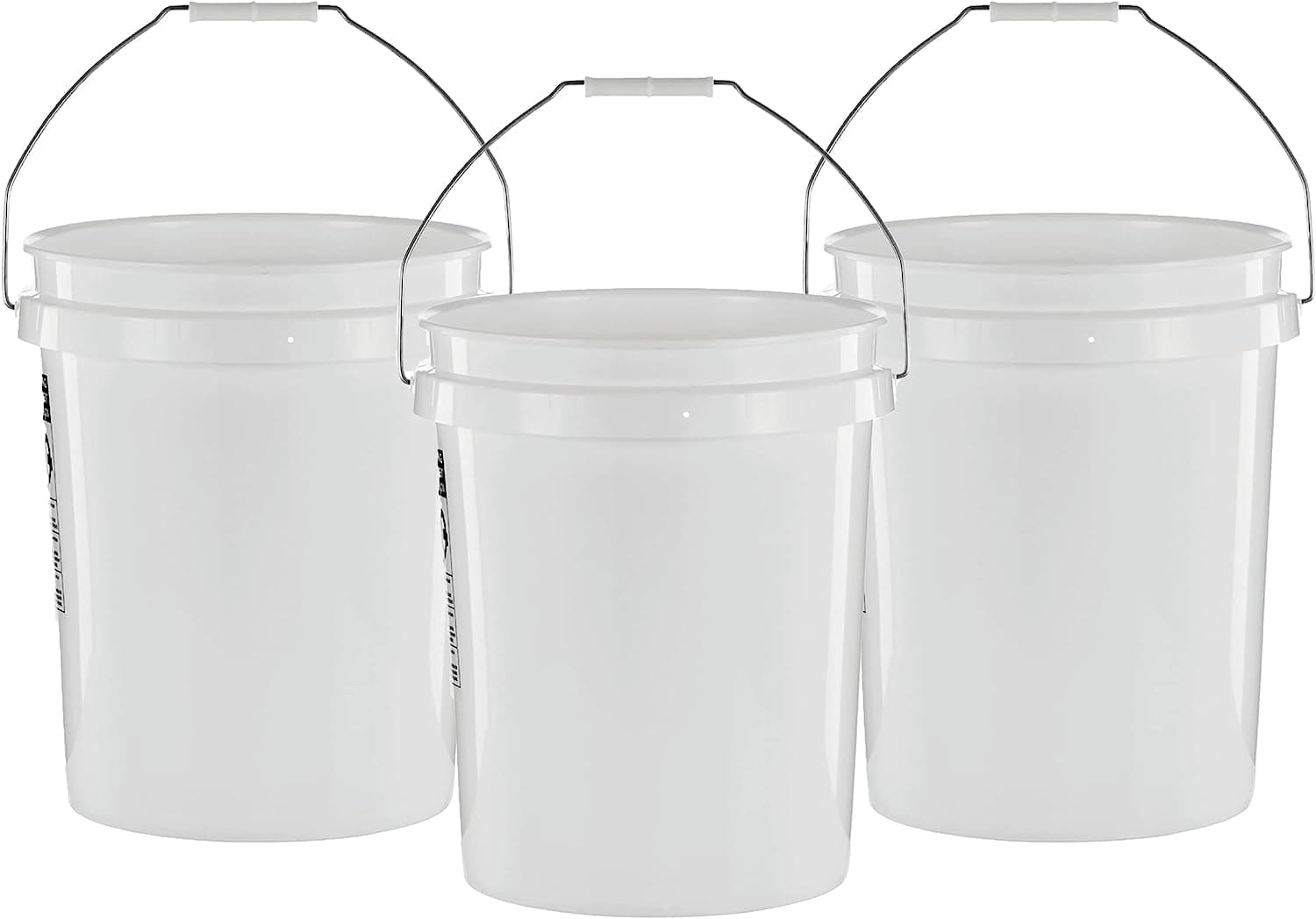
🛒 Shop for Reliable Buckets on Amazon
5. Magnifying Glass: Every detail counts!
Description: It’s essential to be able to closely inspect potential finds on the spot. A jeweler’s loupe offers magnification to scrutinize details, helping you determine if you’ve indeed found a gem.

🛒 Grab Your Magnifying Glass on Amazon
6. Guidebooks and Field Guides: Knowledge at your fingertips.
Description: A gemstone field guide tailored to Wyoming can be an indispensable resource. Not only does it help in identifying potential gems, but it often provides insights into where to find specific gemstones and the geological contexts in which they occur.

🛒 Discover the Best Field Guides on Amazon
7. Containers and Bags: Organize, store, and flaunt your finds.
Description: Once you’ve found your gems, you’ll want to store them safely. Small boxes or pouches help separate and protect individual finds, especially the more delicate specimens.

🛒 Shop for Storage Solutions on Amazon
8. First Aid Kit: Better safe than sorry!
Description: Given the adventurous nature of gem hunting, it’s wise to be prepared for minor injuries like cuts or scrapes.

🛒 Secure Your First Aid Kit on Amazon
Mining for gems in Wyoming’s diverse terrains – from its riverbeds to its mountain ranges – requires a mix of patience, knowledge, and the right tools. With these essentials in your toolkit, you’re well-prepared to unearth the hidden gemstones that Wyoming’s landscapes have safeguarded for millennia.
Tips and Tricks for Successful Gem Mining in Wyoming

Wyoming, with its vast landscapes and geologic diversity, is a gem hunter’s paradise. However, as all seasoned miners will tell you, success is often a mix of knowledge, preparation, and sometimes a bit of luck. To bolster your chances of unearthing a hidden gem, here are some indispensable tips and tricks for gem mining in Wyoming:
1. Research Beforehand: Knowledge is your best ally. Understand the types of gems you’re likely to find in specific areas of Wyoming. For instance, the Wind River Range is known for jade, while the Sweetwater River Area has been known to yield rare red beryl.
2. Start Early: Wyoming’s terrain can be challenging, and you’ll want to maximize daylight hours. An early start gives you the advantage of cooler temperatures and often more peaceful surroundings.
3. Be Environmentally Conscious: Always practice ethical mining. This means not leaving any trash behind, refilling any holes you’ve dug, and respecting the wildlife. Remember, you’re a guest in nature’s home.
4. Wear Appropriate Footwear: The state’s varied terrains demand sturdy footwear. Invest in a good pair of hiking boots that offer ankle support and have a grip suitable for rocky terrains.
5. Stay Alert to the Elements: Wyoming’s weather can be unpredictable, especially in the mountains. Always check the weather forecast before heading out and be prepared for sudden changes.
6. Network with Fellow Miners: Joining a local gem and mineral club can be invaluable. Not only can members share insights on the best spots, but they might also share tools, resources, and the camaraderie can enhance your gem hunting experience.
7. Take Breaks and Stay Hydrated: Gem hunting is a physically demanding activity. Regular breaks prevent exhaustion, and ensuring you have enough water, especially in Wyoming’s drier regions, is crucial.
8. Document Your Finds: Carry a notebook or journal. Documenting where and when you found particular gems can be useful for future reference and helps in learning patterns over time.
9. Trust Your Instincts but Be Patient: Sometimes, the best finds happen when you follow a hunch. However, remember that gem hunting is as much about the journey as the find. Be patient, and enjoy the experience.
10. Safety First: Always inform someone of your whereabouts if you’re going on a mining expedition, especially in remote areas. Consider traveling in groups, and always have a basic first-aid kit on hand.
With these tips in mind, your gem hunting in Wyoming will not only be productive but also safe and memorable. Each adventure into the state’s wilds is a step into the geological tapestry that has been millions of years in the making. Enjoy the journey, and may the gems you find be as rewarding as the experience itself!
Handling Your Gemstone Finds
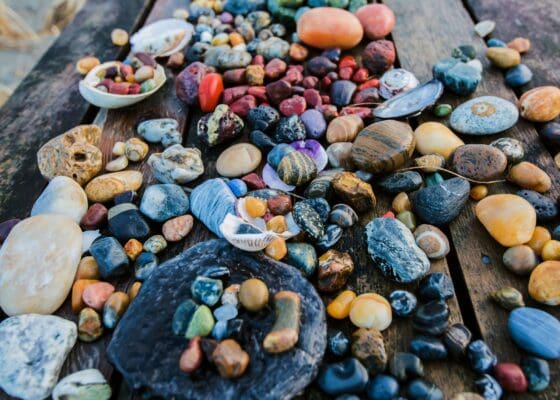
After hours of patiently sifting through the earth, the euphoria of discovering a gemstone is unparalleled. But once you’ve made a find in Wyoming’s diverse terrains, what next? Properly handling, storing, and caring for your treasures is just as essential as the hunt itself. Here’s a guide to ensuring your gemstones remain as dazzling as the moment you unearthed them.
1. Gentle Cleaning: The first step upon extracting a gemstone is to clean it. Use a soft brush and lukewarm water to gently remove any adhering dirt or mud. Avoid using harsh chemicals or abrasive materials, as they might scratch or damage the gem.
2. Proper Storage: To prevent scratches and potential damage, store each gemstone individually. Soft cloth pouches or padded gem boxes are ideal. Ensure that the storage environment is not too humid, as excessive moisture can damage certain gemstones.
3. Documenting Your Find: Maintain a log or journal of your gemstone finds. Note down the date, location of the find, and any unique characteristics. This not only serves as a personal record but can be valuable if you decide to get the gem appraised or identified professionally.
4. Identification: If you’re unsure about the type of gemstone you’ve found, consider investing in a basic gemology book tailored to Wyoming’s geology. For a more detailed analysis, consult with a certified gemologist or take your find to a local gem and mineral show.
5. Valuation and Appraisal: If you believe you’ve struck upon something of significant value, get your gemstone appraised by a professional. They can provide insights into the gem’s quality, rarity, and potential market value.
6. Displaying Your Gems: If you’re keen on showcasing your finds, consider purchasing display cases or shadow boxes. Proper lighting can enhance the gem’s natural brilliance, but be cautious: prolonged exposure to direct sunlight might fade certain gemstones.
7. Learn Basic Gemology: Enhance your understanding of gemstones by taking basic gemology courses or workshops. This can aid in better identifying and valuating your finds.
8. Consider Setting: Some gemstones are perfect for jewelry. If you find a gem with exceptional clarity and brilliance, consider having it cut and set into a piece of jewelry, turning your find into a wearable treasure.
9. Stay Updated: Join gem and mineral forums or groups. Engaging with fellow enthusiasts can provide tips on the latest in gem care, storage, and display techniques.
In essence, the journey doesn’t end once you’ve unearthed a gemstone in Wyoming. Caring for your find ensures its beauty remains preserved for years to come, and each gem becomes a tangible memory of your adventures in the Cowboy State’s vast landscapes.
Famous Gemstone Finds in Wyoming
Wyoming, with its geologic diversity and vast expanse, has been the backdrop for some remarkable gemstone discoveries over the years. These finds, often surrounded by stories of serendipity, hard work, and sometimes sheer luck, have helped solidify the state’s status as a gem hunter’s dream. Let’s delve into some of the most famous gemstone finds in the Cowboy State.
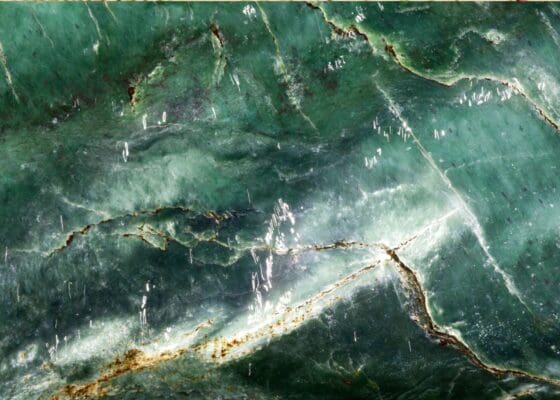
1. The Jade State: Wyoming’s unofficial title, “The Jade State,” is no accident. One of the most significant finds was the discovery of high-quality nephrite jade in the 1930s in the central part of the state. These deposits shifted the world’s attention to Wyoming’s gem potential and cemented its reputation as a jade haven.
2. Sweetwater Agate: The Sweetwater River area unveiled one of the most unique agates – the Sweetwater Agate, characterized by its distinctive red and green bands. Found in the 1930s, these agates remain highly sought after by collectors globally.
3. Star Garnets: While Idaho is often associated with star garnets, Wyoming has had its share of discoveries. A few sites, particularly in the southwestern region, have yielded these rare gemstones that exhibit a star-like pattern on their surface when polished.
4. The Red Emerald Story: The rare red beryl, often referred to as “red emerald” due to its rarity surpassing that of diamonds, was uncovered in the Ruby Range. The discovery added another feather in Wyoming’s diverse gemstone cap.
5. Fire Opals: Though opals are found in various places, the fire opals discovered in Wyoming, with their brilliant red, orange, and yellow hues, stand out, creating quite a stir among gem enthusiasts.
6. The Diamond Debate: The Kelsey Lake Diamond Mine, though situated close to the Wyoming-Colorado border, has stirred debates about the state’s potential as a diamond source. Some significant diamond discoveries in the region have kept this discussion alive among gem hunters.
7. Fossilized Gems: Wyoming’s rich prehistoric past has led to discoveries of fossilized woods and corals, which, over millions of years, have transformed into beautiful gemstones. These stones serve as a bridge between the state’s ancient history and its present.
Each of these remarkable discoveries narrates a tale of Wyoming’s geological tapestry, emphasizing why the state remains a focal point for gem hunters and enthusiasts. Beyond the market value or the aesthetics, these gems encapsulate stories of perseverance, nature’s marvels, and Wyoming’s undying allure in the world of gemology.
Additional Gem Mining Opportunities
Wyoming’s vast expanses and geologic diversity make it a prime destination for gem hunters. However, its neighboring states also boast rich geological terrains, each offering its unique gem-mining experiences. If you’re considering expanding your gem-hunting adventures beyond the Wyoming borders, here’s a quick guide to what awaits in the surrounding states:
- Montana Gem Mining: Known as the “Treasure State,” Montana is famous for its sapphires, especially the Yogo sapphire, which stands out for its brilliant blue hue. The state also offers opportunities to mine garnets, agates, and gold.
- South Dakota Gem Mining: Primarily known for its Black Hills gold, South Dakota also houses deposits of rose quartz, garnets, and the iconic Fairburn agate.
- Nebraska Gem Mining: While not as renowned as its neighbors, Nebraska is home to the beautiful Prairie Agate and Blue Agate, making it a must-visit for agate enthusiasts.
- Colorado Gem Mining: A state rich in mining history, Colorado offers aquamarine from the towering Mount Antero, rhodochrosite from the Sweet Home Mine, and, of course, the allure of gold and silver mining.
- Utah Gem Mining: Nicknamed the “Beehive State,” Utah is known for its vast deposits of topaz, particularly in the Thomas Range. Red beryl and geodes are other sought-after gemstones in this state.
- Idaho Gem Mining: The “Gem State” stays true to its name, offering a plethora of gem-mining opportunities, from garnets and opals to the star garnets exclusive to this state.
Exploring the neighboring states not only broadens your gem-mining horizons but also allows you to experience the rich tapestry of the American West’s geological wonders.
Enhance your gem mining knowledge by exploring our in-depth Gem Mining Near Me guide.
Wyoming’s Gem Allure & Home Mining Kits
Wyoming, a tapestry of vast landscapes and rich geology, beckons gem enthusiasts and adventurers alike with promises of undiscovered treasures beneath its terrains. From the shimmering jade of the Wind River Range to the unique patterns of the Sweetwater Agate, the allure of gem hunting in the Cowboy State is both a journey of discovery and a dance with nature’s hidden wonders. Each dig, each sift, and every patient wait often culminate in the thrill of unearthing a gemstone, a tangible testament to Wyoming’s geological majesty.
However, not everyone can embark on this adventurous quest. For those constrained by time, resources, or other factors, the magic of gem discovery can still be experienced at home. Introducing the Gem Mining Kit: a curated collection of rough gemstones waiting to be sifted, washed, and discovered. This kit brings the excitement of the hunt to your doorstep, offering a delightful experience that mirrors the thrill of a Wyoming gem expedition. Whether you’re a seasoned hunter or a curious beginner, the allure of gem discovery remains timeless and universal.

